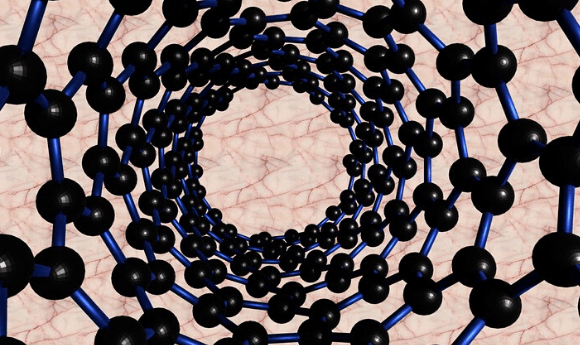Organic nanotubes could change the delivery of targeted cancer treatments

Nanotubes synthesized from organic molecules could provide a new method for the precise, efficient delivery of cancer drugs.
A collaborative project led by Yuehe Lin (Washington State University; WA, USA) and Chun-Long Chen (Pacific Northwest National Laboratory; WA, USA) has utilized organic nanotubes to develop a novel drug-delivery technology capable of tracking and delivering targeted cancer treatments.
The group utilized peptoids – organic molecules whose side chains are bonded to a nitrogen backbone – to synthesize nanotubes from membrane-like nanosheets. The tubes are approximately 100,000 times thinner than a strand of human hair and can deliver multiple treatment strategies directly to cancer cells.
“By precisely engineering these nanotubes with fluorescent dyes and cancer-targeting molecules, scientists can clearly locate tumor cells and track how the drug regimen is performing.”
The team tested this new strategy in lung cancer cells, utilizing the chemotherapy drug doxorubicin and a less invasive photodynamic treatment. Photodynamic therapy works via a chemical that releases reactive oxygen species upon exposure to light.
It was discovered that this dual-treatment approach had the ability to deliver chemotherapy drugs directly into cancer cells, effectively killing them with a much lower dose than usually required. This precision ensured there was little damage to the surrounding cells, a huge benefit, as high doses of chemotherapy can have highly toxic effects on the body.
The nanotubes were also equipped with fluorescent tags and molecules that are specialized to target cancer cells, which ensured efficient imaging and delivery of the cancer therapy.
“By precisely engineering these nanotubes with fluorescent dyes and cancer-targeting molecules, scientists can clearly locate tumor cells and track how the drug regimen is performing,” explained Lin.
“We can also track how nanotubes enter and deliver the drugs inside the cancer cell,” Lin added.
Nanoparticles used to deliver cancer-inhibiting molecule
Carbon nanotube fibers restore damaged hearts
Novel CRISPR/Cas9 nano-carrier shows promise for therapeutic applications
Other nanomaterials – such as carbon nanotubes – have previously been utilized to deliver cancer treatments but were frequently demonstrated to be non-biocompatible and had a much lower specificity than this peptoid-based approach.
“By using these peptoids, we were able to develop highly programmable nanotubes and a biocompatible delivery mechanism,” commented Chen. “We also harnessed the high stability of peptoid and its well-controlled packing to develop nanotubes that are highly stable.”
A joint patent has been filed for the technology, and the team hopes to collaborate with pharmaceutical companies with a view to expand the research in future animal and clinical trials.